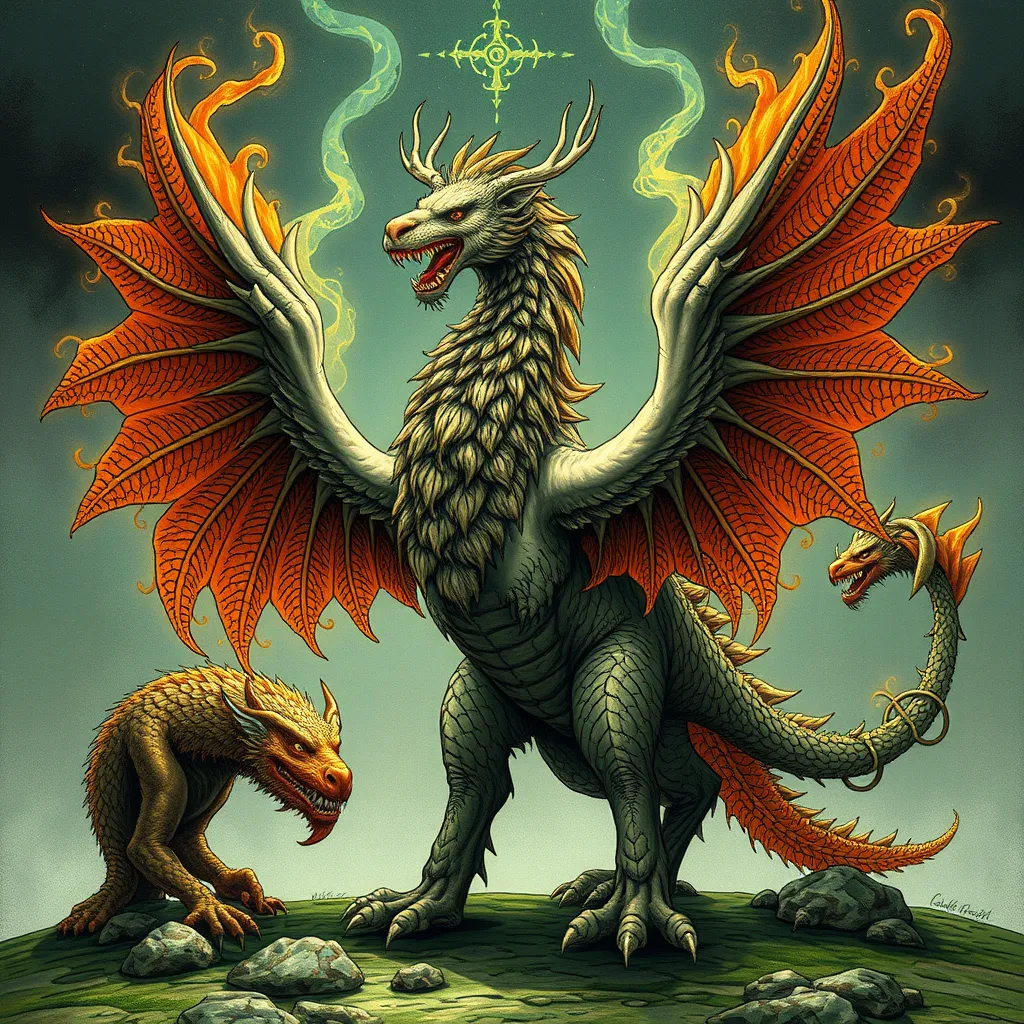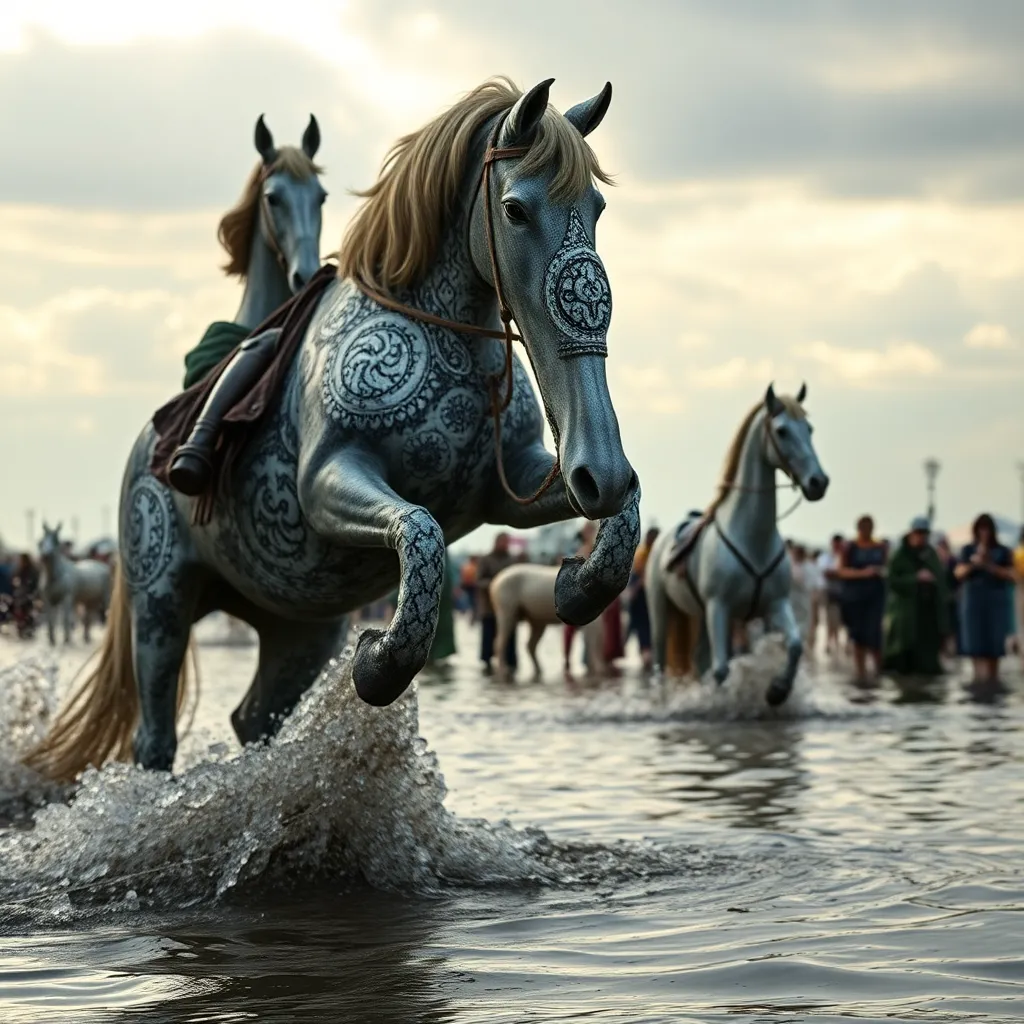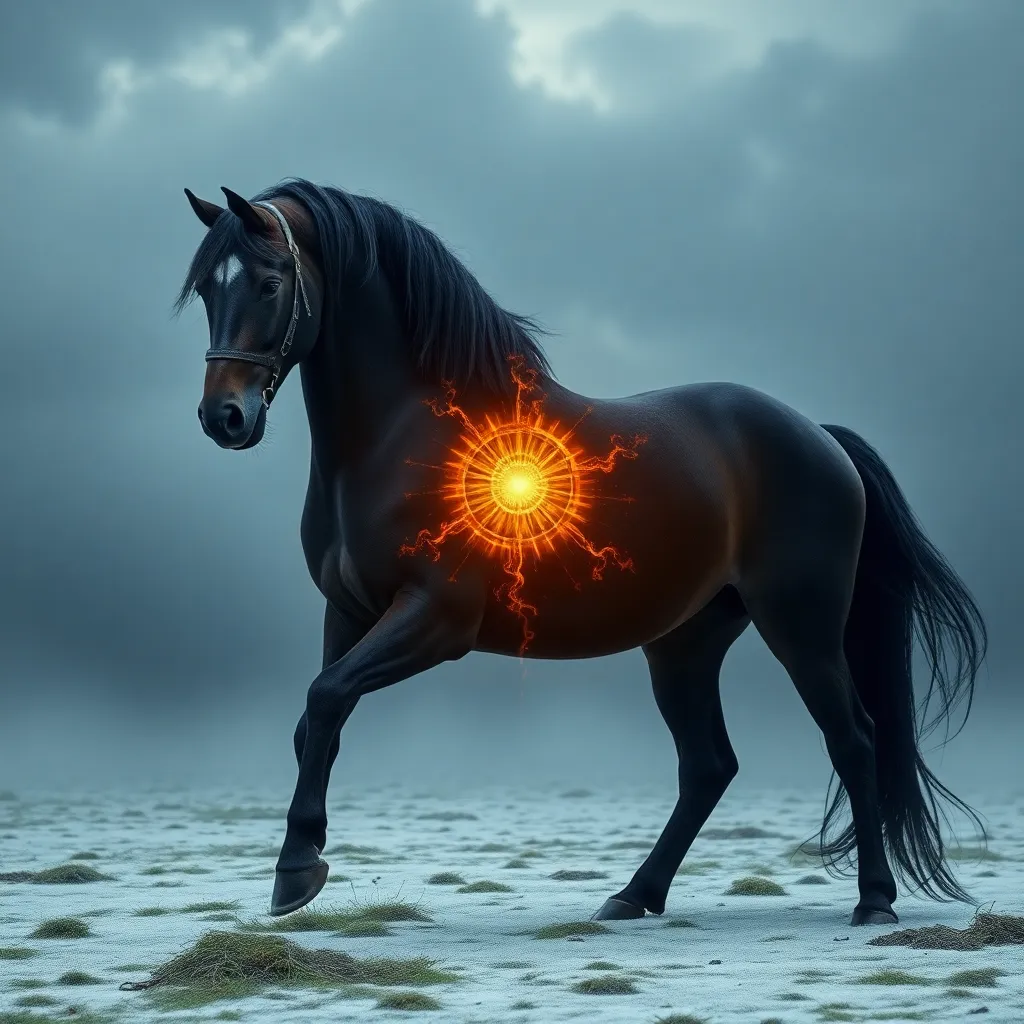The Chimera in Celtic Mythology: From Griffins to Wyverns
I. Introduction to the Chimera Concept
The term “Chimera” originates from Greek mythology, describing a fire-breathing creature composed of parts from different animals, most commonly a lion, goat, and serpent. In the context of Celtic mythology, the concept of hybrid creatures takes on unique interpretations, reflecting the rich tapestry of Celtic beliefs and storytelling.
Celtic culture is replete with mythical creatures that symbolize various aspects of life, nature, and the supernatural. These beings often embody the duality of existence, making them integral to the understanding of Celtic mythology.
II. The Role of Mythical Creatures in Celtic Society
Mythology played a crucial role in the lives of the Celts, serving not only as entertainment but also as a means of explaining the world around them. The stories of mythical creatures were often interwoven with the fabric of Celtic identity, spirituality, and societal norms.
Mythical creatures reflected the values and beliefs of Celtic society in several ways:
- Power and Protection: Creatures like the Griffin embodied strength and guardianship, often associated with nobility.
- Fear and Mystery: Beings such as Wyverns invoked awe and trepidation, symbolizing the unknown and the dangers of the wild.
- Connection to Nature: Many creatures were viewed as manifestations of natural forces, reminding the Celts of their bond with the environment.
III. The Griffin: A Symbol of Power and Protection
The Griffin, a majestic creature with the body of a lion and the head and wings of an eagle, is a prominent figure in Celtic mythology. Its regal appearance and formidable presence made it a powerful symbol of protection and authority.
Characteristics of the Griffin include:
- Physical Traits: The Griffin combines the strength of a lion with the swiftness and keen vision of an eagle.
- Behavior: Griffins are often depicted as guardians of treasures and sacred sites.
In Celtic lore, Griffins appear in various mythological tales, often as protectors of heroes or as symbols of divine favor. For instance, they are sometimes associated with the Tuatha Dé Danann, the mythological race of deities and heroes in Irish mythology.
The symbolism of the Griffin in Celtic culture extends beyond mere guardianship; it represents the virtues of courage, nobility, and a connection between the earthly and the divine.
IV. The Wyvern: A Creature of Fear and Mystery
In contrast to the Griffin, the Wyvern is a more fearsome creature, often depicted as a dragon-like being with two legs and a pair of wings. While both Wyverns and dragons share similarities, they are distinct in their characteristics and roles within mythology.
Key distinctions include:
- Physical Form: Wyverns typically have a more reptilian appearance compared to the more serpentine dragons.
- Behavior: Wyverns are often portrayed as solitary and aggressive, whereas dragons may have more complex roles, including wisdom or benevolence.
In Celtic mythology, Wyverns are often seen as embodiments of chaos and destruction, featuring prominently in tales of battles and conflicts. Their presence evokes a sense of fear and mystery, symbolizing the darker aspects of nature and the unknown.
Symbolically, Wyverns are associated with:
- Danger: They represent the potential for peril in the natural world.
- Transformation: Their fearsome nature can also signify transformation and the necessity of confronting one’s fears.
V. The Chimera as a Hybrid Creature
The concept of hybrid creatures, such as the Chimera, is prevalent in mythology and serves as a fascinating lens through which to explore themes of duality and complexity. In Celtic myths, hybrid beings often symbolize the coexistence of opposing forces.
Examples of hybrid beings in Celtic myths include:
- Merrows: Half-human and half-fish beings representing the connection between land and sea.
- Selkies: Seal-human hybrids that embody the fluidity of identity and the passage between worlds.
The Chimera represents the blending of various elements and ideas, highlighting the significance of duality in life, such as:
- Light and Dark: The balance between good and evil.
- Human and Animal: The connection between humanity and the natural world.
VI. Comparisons to Other Mythological Traditions
When comparing Celtic Chimeras to those of other cultures, such as the Greco-Roman traditions, similarities and differences emerge. The Greco-Roman Chimera is often seen as a monolithic creature, whereas Celtic hybrids tend to reflect a broader spectrum of duality and coexistence.
Celtic myths have influenced other cultures’ understanding of hybrid creatures, exemplifying a universal theme found in various mythologies. This theme highlights:
- Adaptation: How cultures adapt and reinterpret hybrid beings to reflect their values.
- Symbolism: The recurring motifs of transformation and duality across different mythologies.
VII. The Legacy of Chimera Mythology in Modern Culture
The legacy of Chimera mythology, particularly within the context of Celtic culture, continues to resonate in modern literature, art, and popular culture. Many contemporary works draw inspiration from these ancient stories, reinterpreting them for new audiences.
Contemporary interpretations of Celtic Chimera symbolism often explore themes such as:
- Identity: The fluidity of identity in a multicultural world.
- Nature: The relationship between humanity and the environment.
The enduring fascination with mythical creatures, including the Chimera, speaks to humanity’s desire to understand and explore the mysteries of existence.
VIII. Conclusion
In conclusion, the Chimera holds a significant place in Celtic mythology, symbolizing the complexities of life, nature, and the human experience. The exploration of hybrid creatures in folklore reveals deep cultural insights and reflects the values of the society that tells these stories.
As we delve into the world of Celtic mythology, we invite further exploration of its rich tapestry of creatures and tales that continue to inspire and intrigue.



